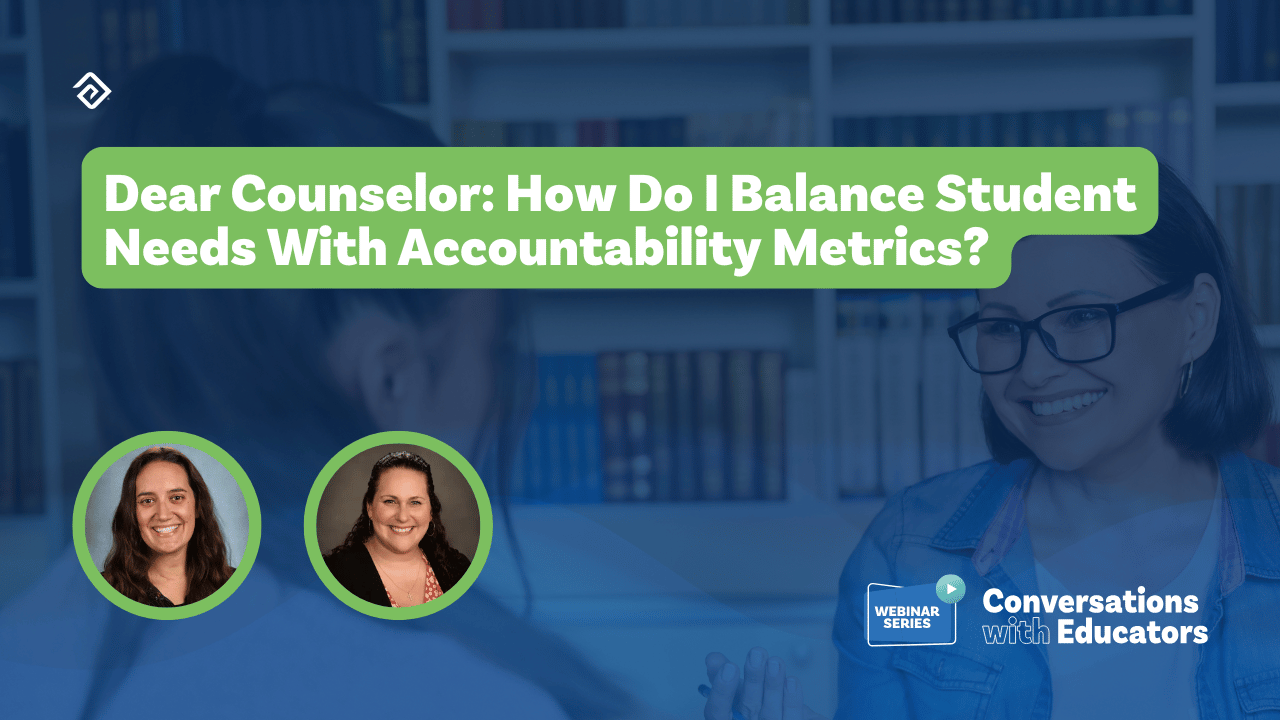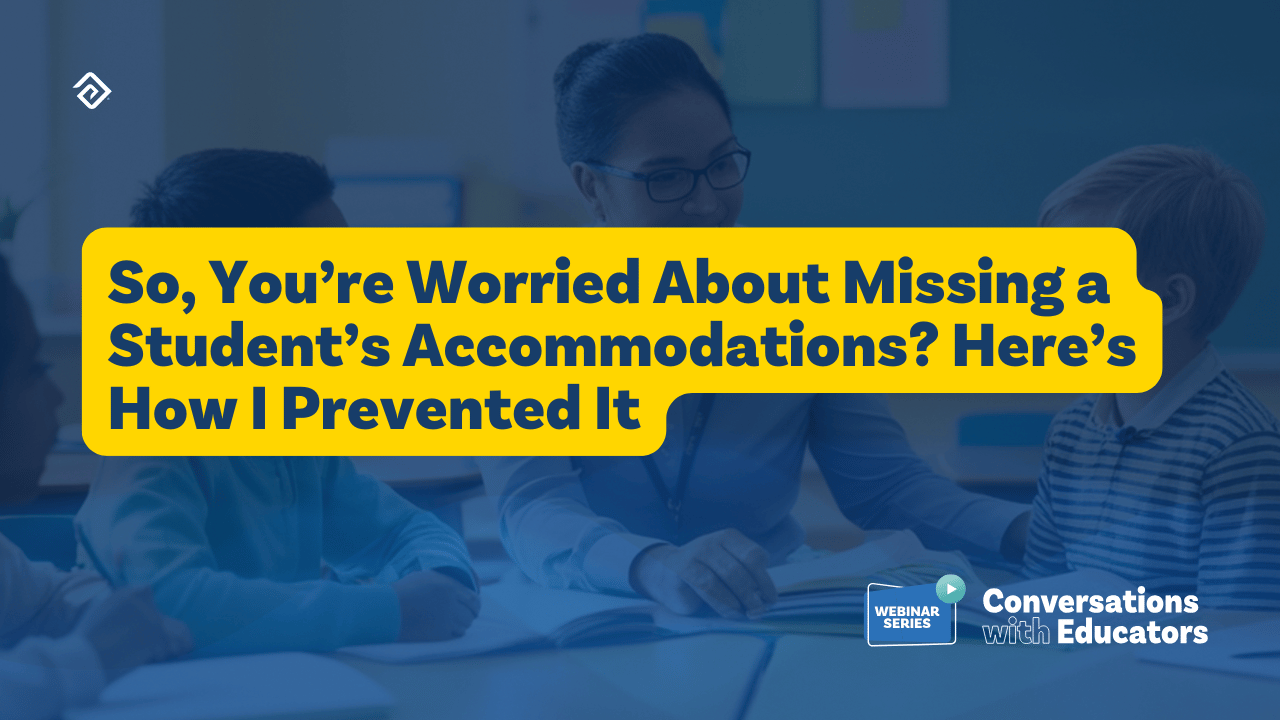What I Wish You Knew: Equity Requires Consistency in Student Support
The First Spark: From Classroom to Leadership
I’ve had a fantastic professional journey. I started out as a junior high history teacher, in the exact same room where I’d taken history as a kid. It felt like coming full circle. From there, I became department chair, then an instructional coach helping teachers integrate technology across the campus. I loved that job.
Eventually, I became an assistant principal in Richardson ISD, serving an incredibly diverse group of students. Those were my babies. Later, I actually opened a brand-new middle school in Prosper, something most educators never get the opportunity to do. I went back to my roots, back to middle school, and loved every minute.
I’ve always been a systems person, so Education Advanced made sense for me. I joined in 2022, and all of our products, especially Pathways, have huge equity components, making sure every student is served well and given real opportunities.
I never really imagined doing anything else but education. Once I was on a campus, I knew I was in the right place. Even now, that hasn’t changed, I just get to reach more students and support more educators than I could before.

What Equity Really Looks Like
I was lucky to have mentors who taught me what equity meant before it became a widespread focus in education. It’s not about giving every kid the same thing; it’s about meeting them where they are.
Some moments still stick with me. During COVID, we had to do individual graduations on the football field, which meant hundreds of kids, Texas heat, and black robes. I remember I got to hold my student’s infant son while handing her a diploma. She had clawed her way to that stage, and she deserved that moment.
I think about middle school girls who felt invisible, or families who needed someone to listen more than they needed a policy. Those experiences taught me that equity isn’t only about academics, it’s about emotional support, about making sure every student feels seen and valued.
When former students message me years later to say they’ve become teachers themselves, that’s the win. I hope it means they felt seen when it mattered most, and now they want to be that person for someone else.
Equity Requires Consistency
For years, when we discussed student equity, we showed teachers that same picture: three kids standing on boxes of different heights to see over a fence. “That’s equity,” we said. But then we gave everyone the same curriculum, the same assessments, and said, “Good luck.”
We talked about equity, but we didn’t always give teachers the tools or support to do it.
Kids thrive when systems are predictable. They need to know that supports aren’t temporary, that they’ll show up again tomorrow. If equity is there one day and gone the next, trust disappears right along with it.
Consistency is what makes equity real. It’s what builds trust with students, families, and teachers. When schools keep showing up the same way, everyone learns that the system is reliable. That someone’s got their back.

Balancing Heart and Logistics
When I was 26, I became an assistant principal. I had teachers who’d been in the profession longer than I’d been alive. I remember thinking, This is an easy fix. Here’s what we’ll do! But they’d look at me and say, “That doesn’t work when you’ve got 37 kids in the room.”
That’s when I learned that listening matters more than solving.
My colleague at the time, Dustin Anderson, shaped how I lead. He told me, If you do what’s best for kids, everything else will be okay.
That became my compass.
The hardest part is balance. You can’t support kids at the expense of teachers. You have to see things through every stakeholder’s eye: the teacher who’s exhausted, the parent who’s worried, the student who’s barely hanging on. That perspective keeps you honest.
And equity isn’t always about economics. Sometimes it’s just about mindset and adjusting the system, so every kid has a fair shot.
From Campus to Company
When I left campus life for Education Advanced, I didn’t want to lose touch with the classroom. I was coming out of an incredible year with a principal who lived and breathed doing what is best for kids, and students with some of the most impactful stories I’ve ever experienced. That timing shaped how I work now.
In Customer Success, we design systems that meet districts where they are, just like teachers meet students where they are. Our job is to make sure products like Pathways actually work for educators in the real world.
It’s the same goal as before, only scaled. If we can make a process more consistent or reduce a burden, that gives educators more time to focus on kids. And that’s equity in action. I think about Alvarado ISD improving their CCMR by 10 percent, which means more funding to pour back into students. So yes, equity doesn’t always have a financial piece, but it sure doesn’t hurt when it helps kids directly.
Every Student Deserves a Champion
I was fortunate enough to have a mentor and friend, Bo Kiser, who incorporated this Rita Pierson quote into every interview:
“Every child deserves a champion – an adult who will never give up on them, who understands the power of connection, and insists that they become the best that they can possibly be.”
That’s it. That’s the why.
The world feels different now, with constant media, constant pressure, and a learned distrust that makes everything harder. But consistency and care are still the antidotes.
Equity isn’t glamorous. It’s not flashy. In fact, it is incredibly difficult and requires immense planning and thoughtfulness. It’s showing up, every day, for every kid, especially the ones who need you most.
That’s what consistency looks like. That’s what makes equity real.

More Great Content
We know you'll love




